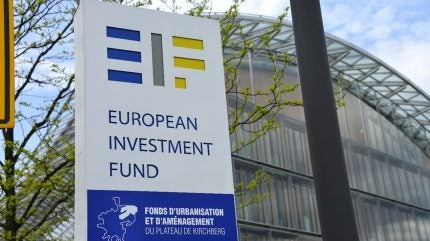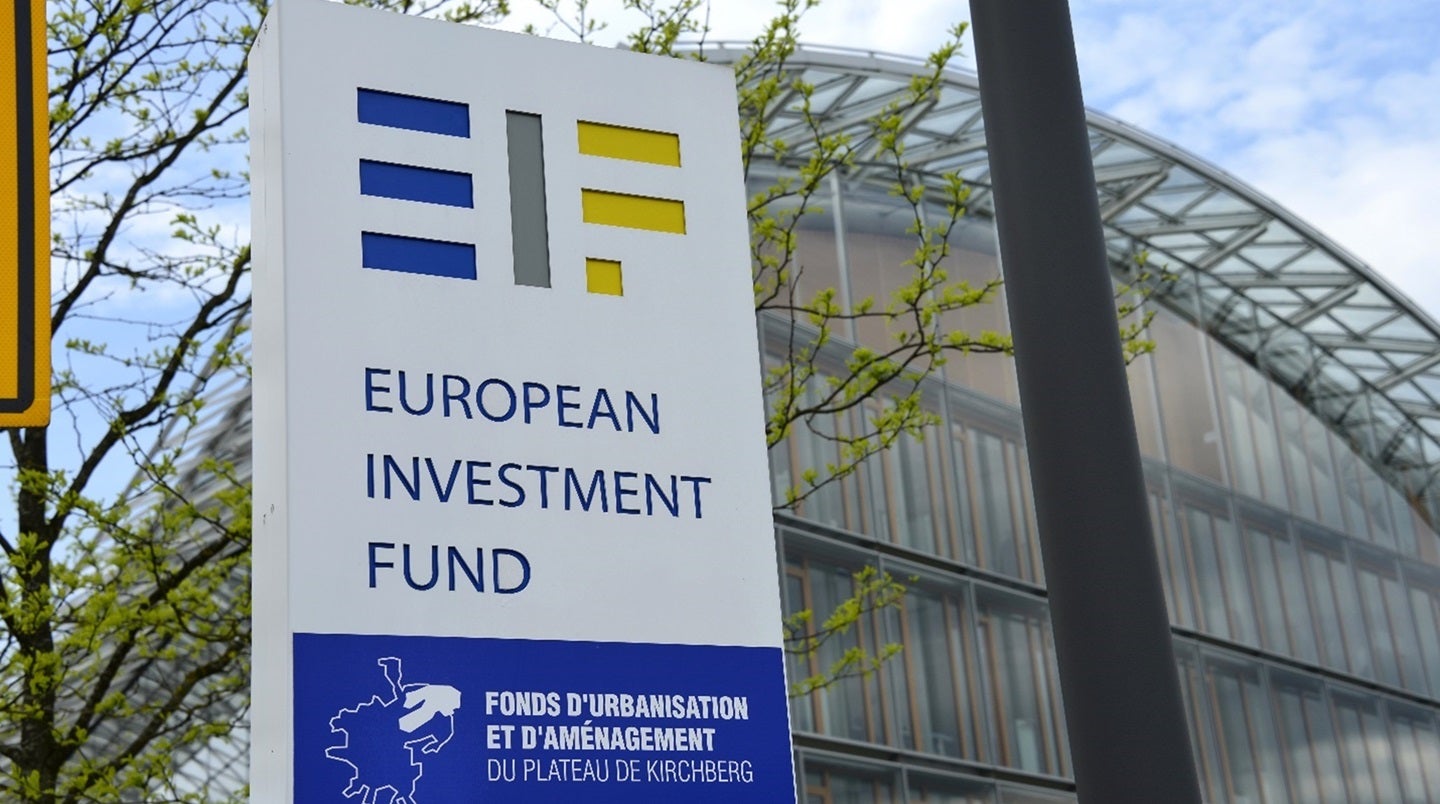
European Investment Fund headquarters in Luxembourg. Credit: Shutterstock/nitpicker.
The European Investment Fund, the European Union’s (EU) specialised financial institution for risk finance, is aiming to strengthen the defence supply chain with a €30m ($35.5m) injection into the first private credit vehicle devoted exclusively to financing small and medium enterprises (SMEs) in defence.
On 17 September 2025, the EU Commission confirmed that Sienna Investment Managers (IM) will oversee the new fund, called Sienna Hephaistos – aptly named after Hephaestus, the Greek god of blacksmiths.

Combine business intelligence and editorial excellence to reach engaged professionals across 36 leading media platforms.
That same day, Sienna marked its first closing, that is, the beginning of its fundraising period and allowing the fund to begin operations and make initial investments. So far the company has secured more than €270m, but looking ahead Sienna aim to raise between €500m and €1bn by the end of 2026.
How will the new fund operate?
Sienna Hephaistos is a debt fund intended to support the subcontracting chain of major groups in Europe’s growing defence industry.
Sienna’s French private credit management team will deploy the inflows across Europe. It is said that the fund will support 30 to 40 companies. These loans will finance an SME’s working capital, capex, and external growth operations, in addition to capital financing and bridging existing bank financing.
“Historically committed to the financing of mid-market companies, [Sienna] are convinced that the mobilisation of all financial players, banks, alternative lenders, equity investors, is crucial for the European defence industry,” said Laurent Dubois, managing director and chief information officer, private credit, Sienna IM.
“This is key for sovereignty, development and reindustrialisation of our regions,” he continued.
The EU Commission echoed these words in their press release, suggesting the new fund will bridge the financing gap by providing tailor-made debt solutions that enable companies to expand production build up inventories, and support industry consolidation.
By easing supply chain bottlenecks, the fund directly contributes to scaling up European defence production and reinforcing Europe’s strategic autonomy.
SME troubles in defence
William Ashford-Brown, director of strategic insights at the Heligan Group, a UK-based investment company, touched on some of the factors behind why SMEs struggle in defence. Although attitudes are now changing, “the limited access to funding is, at its core, a consequence of risk,” he observed.
“Defence SMEs are inherently hamstrung by a number of unique sectorial factors – long, unpredictable procurement cycles; high customer concentrations; and cash flow issues – all of which combine to raise their risk profiles when being assessed for investment and lending,” Ashford-Brown identified.
“War and instability amplify the problem,” said Andriy Dovbenko, principal of UK-Ukraine TechExchange, a group connecting British and Ukrainian start-ups with capital and individuals who can get technologies to market through in-field testing.
“In Ukraine, although the war has created urgent demand for scaling production, it has also heightened material and financial risks such as supply chain disruptions, infrastructure damage, and currency fluctuations.
“These make both lenders and investors cautious. That’s why this new [EU-backed] fund is so crucial. It recognises the realities of the sector and provides financing solutions where banks might hesitate, enabling critical suppliers to scale and reinforce Europe’s strategic autonomy when it comes to defence and future peace.”
Strategic autonomy
While many European countries have taken up a policy of ‘strategic autonomy’, prompted by transatlantic divisions, namely US tariffs and America’s military detatchment from Europe, disentangling from the US defence technological and industrial base is implausible.
Europe’s foremost complex weapons systems builder MBDA has hinted its ability to pivot away from any reliance on US components should the customer require. However, this is less compelling given that throughout 2024 Britain and France had to restrict Ukraine’s use of MBDA’s Storm Shadow/SCALP cruise missiles deep inside Russian territory as the US was not inclined to escalate the conflict until late in the year.
Still, Europe aims to tip the scale in its favour with a set of objectives laid out in its inaugural defence industrial strategy, issued in April last year. This strategy aims for intra-EU defence trade to represent 35% of the value of the EU defence market, and the plan will also see the EU procure 50% of their defence procurement budget within the union by 2030 and 60% by 2035.
In addition, the EU’s €30m commitment shows it will also foster debt financing, which will open up new avenues of funds for SMEs driven by the long-term demand for military resources needed to resist Russian hybrid – so-called ‘gray-zone’ – activity.
Similarly, in March 2025, the German Parliament decided to end years of fiscal restraint by agreeing to remove the debt brake, a policy that now allows defence and certain security budgets to increase beyond the confines set by the country’s restrictions on budget deficits.
Sign up for our daily news round-up!
Give your business an edge with our leading industry insights.
Naval Technology Excellence Awards – The Benefits of Entering
Gain the recognition you deserve! The Naval Technology Excellence Awards celebrate innovation, leadership, and impact. By entering, you showcase your achievements, elevate your industry profile, and position yourself among top leaders driving industry advancements. Don’t miss your chance to stand out—submit your entry today!

